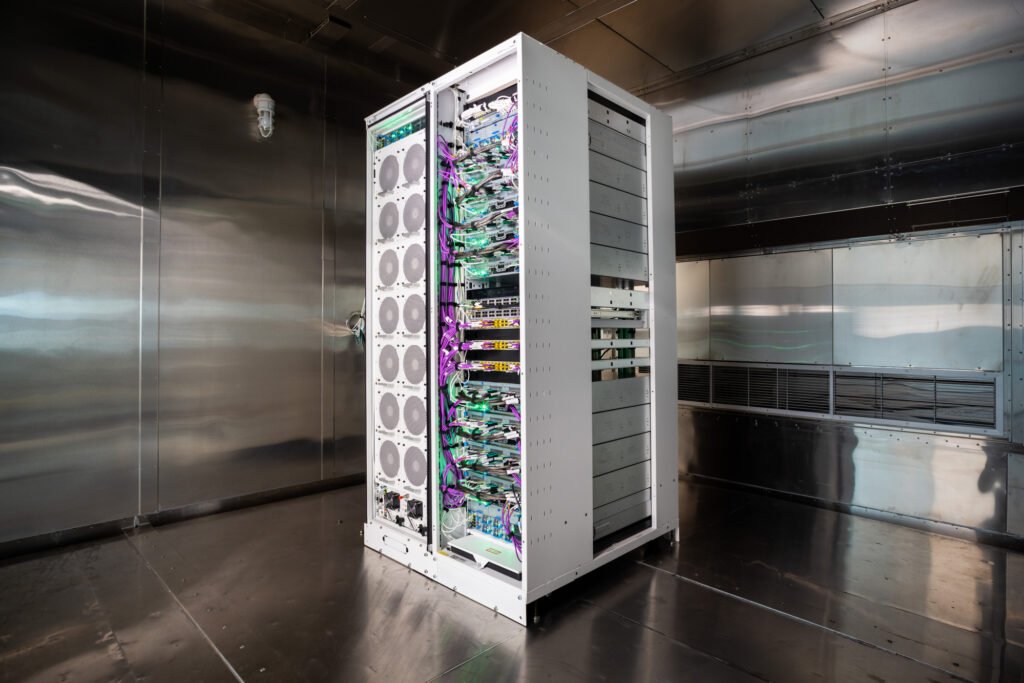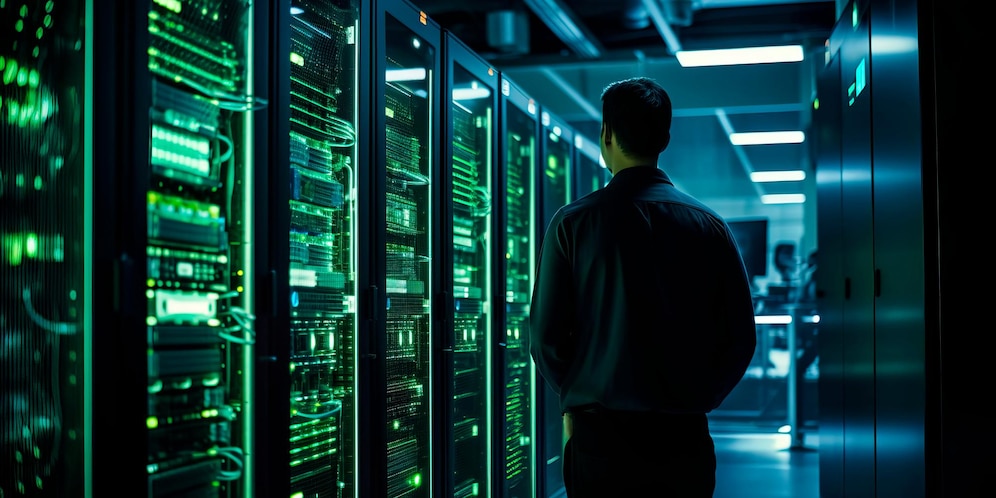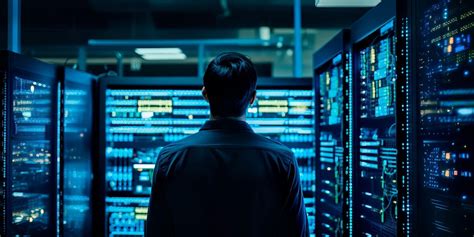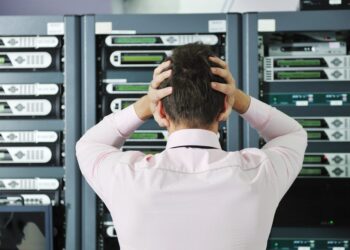The digital backbone of our modern world, from streaming services and social media to scientific research and financial markets, relies heavily on server racks. These seemingly mundane structures are the physical homes for the computing power that fuels our interconnected lives. However, as the demand for data processing escalates exponentially, driven by breakthroughs in AI, machine learning, and the Internet of Things (IoT), the traditional design and management of server racks face unprecedented challenges. Enter Artificial Intelligence (AI), a transformative force that is not merely optimizing existing infrastructure but fundamentally reshaping the very architecture and operation of next-generation server racks. For businesses navigating the complexities of data centers and for content creators seeking to tap into a high-value, high-CPC niche, understanding how AI is revolutionizing server rack technology is paramount. This comprehensive article will delve deep into the critical role of AI in enhancing efficiency, performance, and sustainability within data centers, offering insights into the future of computing infrastructure.
The Evolution of Server Racks: From Static to Smart
For decades, server racks were relatively passive enclosures, providing physical support and basic cable management. Their evolution largely mirrored the advancements in server hardware itself—more powerful CPUs, denser storage, and faster networking. However, this traditional approach presented significant limitations in the face of escalating computational demands.
The challenges with conventional server racks include:
- Inefficient Cooling: Manually managed cooling systems often lead to hot spots, wasted energy, and the risk of hardware failure.
- Suboptimal Power Usage: Fixed power distribution means energy isn’t always allocated where it’s most needed, leading to underutilized power supplies and higher operational costs.
- Limited Scalability and Flexibility: Expanding or reconfiguring racks often requires significant manual intervention, leading to downtime and complexity.
- Lack of Real-time Insights: Without intelligent monitoring, identifying performance bottlenecks or potential failures is reactive rather than proactive.
- High Operational Costs: Energy consumption for power and cooling constitutes a major portion of data center expenditures.
The advent of AI offers a paradigm shift. By leveraging data analytics, machine learning algorithms, and intelligent automation, AI transforms server racks from static containers into dynamic, self-optimizing, and responsive components of a larger, intelligent data center ecosystem. This evolution is crucial for handling the immense computational loads imposed by AI itself, creating a symbiotic relationship where AI fuels infrastructure, and infrastructure supports AI.
Core Pillars of AI-Driven Server Rack Innovation
AI’s influence on server racks manifests across several critical areas, fundamentally altering how data centers are designed, operated, and maintained.
A. Intelligent Cooling and Thermal Management
Cooling is perhaps the most significant operational challenge and cost driver in data centers. AI provides unprecedented precision and efficiency in thermal management.
- Predictive Hot Spot Identification: AI algorithms analyze real-time data from hundreds of temperature sensors within and around server racks. They can predict the formation of hot spots before they occur, allowing cooling systems to preemptively adjust airflow or liquid cooling delivery. This prevents hardware degradation and optimizes energy use.
- Dynamic Cooling Optimization: Instead of static cooling settings, AI continuously fine-tunes CRAC (Computer Room Air Conditioner) units, in-row coolers, and liquid cooling systems based on actual server workload and thermal load. This includes adjusting fan speeds, water flow rates, and chiller temperatures with granular precision, minimizing over-cooling or under-cooling.
- Computational Fluid Dynamics (CFD) with AI: AI enhances traditional CFD modeling, enabling more accurate simulations of airflow and heat dissipation within and between racks. It can rapidly explore various cooling configurations and predict their efficiency, informing optimal rack placement and aisle containment strategies.
- Integration with External Factors: AI can incorporate external environmental data (e.g., outside air temperature, humidity) for free cooling opportunities and optimize chiller plant operations, reducing the reliance on energy-intensive mechanical cooling.
- Liquid Cooling Orchestration: For high-density racks utilizing direct-to-chip or immersion cooling, AI precisely manages coolant flow rates and temperatures, ensuring optimal thermal transfer and preventing localized overheating in highly concentrated compute areas. This is especially vital for GPU-dense AI/ML training clusters.
B. Optimized Power Management and Energy Efficiency
Power consumption is the other major operational expenditure. AI introduces intelligent power distribution and consumption patterns.
- Workload-Aware Power Allocation: AI analyzes real-time server workloads and intelligently allocates power based on immediate demand. This means power isn’t constantly supplied at peak capacity to every server, leading to significant energy savings and reducing wasted standby power.
- Predictive Power Usage Effectiveness (PUE) Optimization: PUE is a key metric for data center efficiency. AI models predict PUE based on various operational parameters and recommend adjustments to power distribution units (PDUs), UPS systems, and cooling to maintain optimal energy efficiency.
- Anomaly Detection in Power Consumption: AI can identify unusual power draws that might indicate failing hardware, misconfigurations, or even security breaches, allowing for proactive intervention.
- Server Power Capping: AI can dynamically implement power caps on individual servers or groups of servers during non-critical periods, further reducing overall energy consumption without impacting essential services. This is especially useful during off-peak hours or for less critical workloads.
- Renewable Energy Integration: AI systems can intelligently manage energy storage solutions (batteries) and integrate with renewable energy sources (solar, wind) by predicting availability and demand, ensuring a stable and greener power supply to the racks.
C. Predictive Maintenance and Anomaly Detection
AI shifts maintenance from a reactive to a proactive model, minimizing downtime and maximizing hardware lifespan.
- Hardware Failure Prediction: AI algorithms analyze sensor data (temperature, voltage, fan speed, disk health) from thousands of components within servers and racks. By identifying subtle deviations from normal operating parameters, AI can predict impending hardware failures (e.g., hard drives, RAM modules, power supplies) with remarkable accuracy before they lead to outages.
- Component Lifetime Optimization: By understanding the stress patterns on individual components, AI can recommend optimal replacement schedules, extending hardware lifespan and reducing unnecessary replacements.
- Proactive Problem Resolution: When an anomaly is detected, AI can automatically trigger alerts, create support tickets, or even initiate automated mitigation actions (e.g., shifting workload to another server, adjusting environmental controls) without human intervention.
- Root Cause Analysis: In the event of a failure, AI can rapidly analyze logs and sensor data to pinpoint the root cause, accelerating troubleshooting and preventing recurrence. This drastically reduces mean time to recovery (MTTR).
- Firmware and Software Update Management: AI can identify optimal times for firmware and software updates on servers and networking gear within the racks, scheduling them to minimize disruption and ensure compatibility.
D. Automated Resource Orchestration and Workload Management
AI enhances the flexibility and responsiveness of server racks by intelligently managing compute resources.
- Dynamic Workload Placement: AI can intelligently decide where to deploy new virtual machines or containers based on real-time resource availability, thermal conditions, and power constraints across different racks and even different data centers. This ensures optimal performance and prevents overloading.
- Load Balancing and Migration: AI continuously monitors workload demands and can automatically rebalance compute loads across servers and racks, or even migrate virtual machines to cooler or less utilized areas to maintain performance and efficiency.
- Resource Hot-Swapping and Reconfiguration: In advanced systems, AI can guide or even automate the reconfiguration of hardware resources (e.g., reassigning GPUs, allocating storage) within racks based on changing workload requirements, minimizing human intervention.
- Rightsizing and Capacity Planning: By analyzing historical data and predicting future demand, AI assists data center managers in accurately rightsizing server rack infrastructure, preventing overprovisioning (which wastes capital and energy) and under-provisioning (which leads to performance issues).
- Multi-Cloud and Hybrid Cloud Integration: AI-driven orchestration extends beyond a single data center, enabling intelligent workload placement and management across on-premise racks and various public cloud environments, optimizing for cost, performance, and compliance.
E. Security and Anomaly Detection
AI plays a crucial role in enhancing the physical and cyber security of server racks.
- Physical Security Monitoring: AI-powered cameras can monitor access to server racks, detect unauthorized personnel, and identify unusual movements or tampering. Facial recognition and behavioral analytics enhance traditional access control systems.
- Cyber Threat Detection: AI analyzes network traffic patterns within and between racks, identifying anomalous behavior that could indicate a cyberattack, malware, or data exfiltration attempts far faster and more accurately than traditional rule-based systems.
- Environmental Anomaly Detection: Beyond temperature, AI can detect unusual humidity, vibration, or even sound patterns within the rack environment, signaling potential issues like water leaks, loose components, or failing fans before they escalate.
- Insider Threat Detection: By analyzing user access patterns and command-line activity on servers within the racks, AI can identify suspicious behavior that might indicate an insider threat or compromised credentials.
- Automated Response: In the event of a detected security threat, AI can trigger automated responses, such as isolating affected racks or servers, alerting security teams, or initiating data backups.
Technologies Enabling AI in Server Racks

The integration of AI into server racks isn’t magic; it’s the result of several converging technological advancements.
A. Advanced Sensor Networks
The foundation of AI’s intelligence is data. Next-gen server racks are densely populated with a variety of sensors:
- Temperature Sensors: At chip, server, rack, and room levels.
- Humidity Sensors: To prevent static discharge and condensation.
- Power Meters: Granular monitoring of power consumption at server, PDU, and rack levels.
- Flow Meters: For liquid cooling systems.
- Vibration Sensors: To detect fan failures or unstable components.
- Acoustic Sensors: To identify unusual noises indicating mechanical issues.
- Environmental Quality Sensors: Monitoring air particulates for cleanliness.
B. Edge Computing and On-Rack AI Processors
Processing all the sensor data in a central cloud can introduce latency. Edge computing brings AI processing closer to the source of data—sometimes directly on the rack itself.
- Reduced Latency: Enables real-time decisions for cooling adjustments or immediate anomaly detection.
- Data Pre-processing: Filters and aggregates raw sensor data locally before sending it to a central AI system, reducing bandwidth requirements.
- Enhanced Security: Sensitive data can be processed on-site, reducing exposure to external networks.
- Dedicated AI Accelerators: Some server racks may incorporate small, dedicated AI chips (like NVIDIA’s Jetson modules or Google’s Edge TPUs) for local inference, making immediate, intelligent decisions.
C. High-Bandwidth Networking and 5G Integration
Robust and low-latency communication networks are essential for AI-driven data centers.
- High-Speed Interconnects: 100GbE, 400GbE, or even InfiniBand within and between racks ensure rapid data transfer for AI analysis.
- Software-Defined Networking (SDN): Enables AI to dynamically reconfigure network paths to optimize workload communication and resource allocation.
- 5G and Private Wireless Networks: For large data center campuses, 5G can provide reliable, low-latency connectivity for IoT sensors and edge devices that feed data to the rack-level AI.
D. Advanced AI/ML Frameworks and Platforms
The software behind the intelligence.
- Machine Learning Platforms: Tools like TensorFlow, PyTorch, and specialized data center optimization platforms allow for the development and deployment of complex AI models.
- Reinforcement Learning: AI agents learn to optimize cooling and power strategies by trial and error in simulated or real environments, achieving optimal efficiency.
- Digital Twins: Creating a virtual replica of the physical server rack and data center. This digital twin constantly updates with real-time sensor data, allowing AI to simulate “what-if” scenarios, predict outcomes, and optimize performance virtually before implementing changes physically.
The Impact on Data Center Operations and Sustainability
The integration of AI into server racks profoundly impacts data center operations and their environmental footprint.
A. Significant Energy Savings
By precisely optimizing cooling and power, AI can lead to substantial reductions in energy consumption, often ranging from 10% to 30% or even higher in older facilities. This directly translates to lower operational costs and a reduced carbon footprint.
B. Enhanced Reliability and Uptime
Predictive maintenance capabilities drastically reduce unexpected downtime due to hardware failures. Proactive anomaly detection and automated responses mean higher overall reliability and continuous service availability, critical for mission-critical applications.
C. Improved Scalability and Agility
AI-driven automation simplifies the process of adding new capacity, reconfiguring resources, and adapting to changing workload demands. Data centers become more agile and responsive to business needs.
D. Reduced Operational Expenditures (OpEx)
Lower energy bills, reduced maintenance costs, and optimized staffing through automation collectively contribute to significant OpEx savings, making data center operations more cost-effective.
E. Environmental Sustainability and Green IT
AI’s ability to optimize energy usage, prolong hardware lifespan, and potentially integrate with renewable energy sources makes data centers significantly more sustainable. This aligns with global efforts to reduce carbon emissions and promotes green IT initiatives.
F. Human Resource Optimization
While AI automates many routine tasks, it doesn’t eliminate the need for human oversight. Instead, it frees up skilled engineers to focus on higher-level strategic tasks, complex problem-solving, and continuous innovation, shifting their role from reactive maintenance to proactive optimization and design.
Challenges and Considerations for AI-Powered Racks

Despite the immense benefits, the full integration of AI into server rack management comes with its own set of challenges.
A. Data Volume and Quality
AI models require vast amounts of high-quality, continuous data from sensors to be effective. Ensuring accurate data collection, cleaning, and labeling is a significant undertaking.
B. Complexity of Implementation
Deploying sophisticated AI systems for data center management requires specialized skills in AI, data science, and IT infrastructure. The initial setup and integration with existing legacy systems can be complex and costly.
C. Security Concerns
Allowing AI to control critical infrastructure components introduces new security vulnerabilities. Robust cybersecurity measures are essential to protect AI models and the data they process from malicious actors.
D. Vendor Lock-in and Interoperability
Ensuring that AI solutions from different vendors can seamlessly integrate with diverse hardware and software stacks across a data center can be a challenge. Open standards and APIs are crucial for flexibility.
E. Ethical Considerations and Trust
Reliance on AI for critical decisions raises questions about accountability. Building trust in AI systems and ensuring human oversight and intervention capabilities are essential.
F. The “AI Compute Paradox”
The irony is that training and running advanced AI models themselves require immense computational power, leading to significant energy consumption. Optimizing the infrastructure for AI with AI becomes a critical loop that requires continuous innovation.
The Future: Autonomous Data Centers
The ultimate vision of AI-powered server racks leads to the concept of the autonomous data center. Here, AI takes on an even more pervasive role, orchestrating nearly all aspects of operation with minimal human intervention.
- Self-Healing Racks: AI identifies and isolates failing components, automatically shifts workloads, and potentially initiates automated hardware replacements.
- Self-Optimizing Environments: The entire data center environment—power, cooling, network—constantly adjusts in real time based on fluctuating demand and external conditions, achieving peak efficiency.
- Predictive Capacity Growth: AI accurately forecasts future resource needs and automatically triggers procurement and deployment processes.
- Fully Integrated Security: AI-driven security systems provide continuous, adaptive threat detection and response across physical and cyber domains.
This future isn’t far-fetched; elements of it are already being implemented in hyperscale data centers. As AI capabilities advance and become more accessible, these intelligent rack systems will democratize efficiency and performance for data centers of all sizes.
Powering the Digital Horizon
The traditional server rack is rapidly evolving into a sophisticated, intelligent unit, fundamentally transformed by the pervasive integration of Artificial Intelligence. This shift is not merely an incremental upgrade but a revolutionary leap that addresses the escalating demands for compute power, energy efficiency, and operational resilience in the digital age. From hyper-optimized cooling and dynamic power allocation to predictive maintenance and automated resource orchestration, AI is making server racks smarter, more efficient, and more sustainable than ever before. While challenges in data management, implementation complexity, and security remain, the trajectory towards autonomous, AI-driven data centers is clear. As AI continues to mature and its applications expand, these next-generation server racks will form the unbreakable backbone of our increasingly data-intensive world, powering everything from advanced scientific research to the everyday digital experiences that define our modern lives, ensuring a more efficient, reliable, and environmentally responsible computing future







